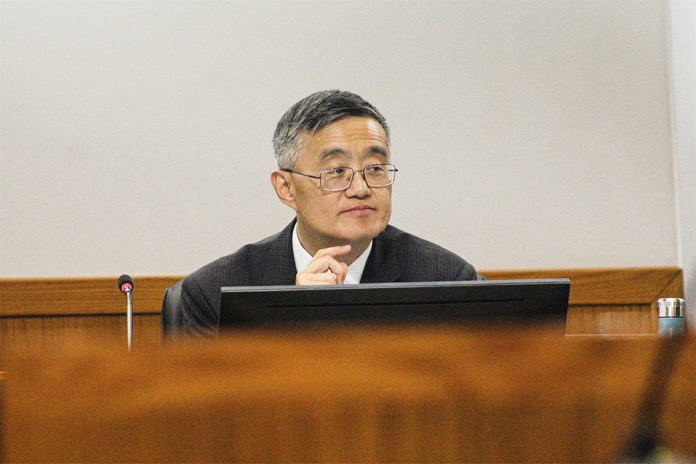
Santa Clara County supervisors voted unanimously Thursday to ask voters to approve new sales taxes that will place half the county in the double-digits.
The sales tax increase will be on the Nov. 4 ballot. Thursday was the last day for items to be added to that ballot, which will also feature a special county election for County Assessor.
The sales tax increase needs only a simple majority of county voters to be enacted, because it is an unrestricted tax that can be spent for any county government purpose.
County officials said the higher taxes are needed to close a projected billion-dollar budget shortfall they say is the result of the federal government’s “Big Beautiful Bill.”
The countywide sales tax will rise to 9.75%, if voters approve the plan supervisors endorsed on Thursday.
Consumer purchases made in the cities of San Jose and Milpitas, which have city sales taxes as well, would have a 10% tax. Campbell businesses would collect 10.5%, the county’s highest rate, if the plan wins voter support. Consumers in Los Gatos would pay 9.875%.
The sales tax would add $187.50 to the price of a $30,000 car, and $1.25 to a $200 non-exempt retail purchase.
More than a quarter of its $14.7 billion budget comes directly or indirectly from the federal government, according to the county. More than half the expenditures are for hospitals and health care.
Santa Clara County Executive James Williams forecast Thursday that county revenue will suffer a $1.3 billion loss by the 2029-30 fiscal year.
Williams said the county can collect more than $330 million over five years from the proposed five-eighths-cent additional sales tax.
About 70% of the county’s public healthcare system, which has expanded rapidly in recent years, is funded by Medicare and Medicaid. The county’s 2025-26 budget grew by $1 billion over the FY 2024-25 budget, largely because of the County’s $150 million acquisition in April of the 1000-employee Regional Medical Center in East San Jose from HCA Healthcare.
In 2019, the county purchased San Jose’s O’Connor Hospital, along with St. Louise Regional Hospital in Gilroy and De Paul Health Center in Morgan Hill, for a combined $235 million in a bankruptcy sale.
“It is literally a reflection at a national level, in California and in our home county, of thousands of individuals who will lose health insurance coverage,” Williams said
The County’s ‘Three-Pronged Approach’
Williams said his office developed a three-pronged approach to tackle the upcoming budget shortfalls—expanding partnerships with state leaders, reorganizing services within the hospital system and achieving voter approval of the sales tax measure.
As the Valley Healthcare System is the primary care provider for one in four county residents, multiple health workers turned up to Thursday’s meeting to warn county officials that any substantial service cuts will compromise care quality.
Williams said the approach will be necessary for Santa Clara County to sustain service levels at the 15-hospital and clinic Valley Healthcare System, but homeless and healthcare advocates say the proposed service reductions will put low-income residents in even more dire situations.
“These federal cuts could force the county to eliminate essential programs across every area that helps stabilize individuals and prevent homelessness, even before it starts, we urge you to move forward with the proposed sales tax,” said Destination: Home community outreach and education officer Esmeralda Virelas.
“We must explore any avenue for protecting these critical services,” she said.
Williams said they would not discuss specifics on spending Thursday, but said the supervisors would begin discussing details of the 2026-27 budget in October.
“This is very important to me that we make some kind of commitment today to our voters that we are going to make changes—significant changes to how we do our finances,” said District 5 Supervisor Margaret Abe-Koga.
The largest portion of the sales tax rate is a state levy of 7.25%. County governments – and many cities – add additional sales taxes. In the Bay Area, the current sales tax rates vary from a low of 8.625% in San Francisco to a high of 10.25% in Alameda County, where consumers buying products in four cities – Alameda, Albany, Newark and San Leandro – pay a 10.75% sales tax.
Current sales taxes in 65 California cities are at 10% or higher – 47 in Los Angeles County. The proposed new Santa Clara County property tax rate would match the current Los Angeles County rate.
Statewide, the city of Lancaster in Los Angeles County has the highest local sales tax rate, at 11.25%, according to the California Department of Tax and Revenue.
Barry Holtzclaw contributed to this report.









